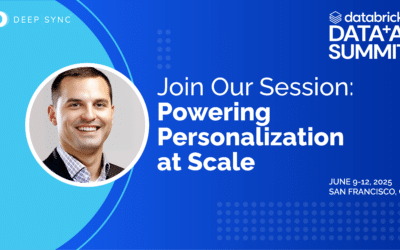How well do you know your donors and supporters?
By studying your existing donor database and learning about your target audience, you can get a detailed look into the patterns and factors that impact your current fundraising outcomes, who is supporting your mission and why, and insights on how to strategize your next fundraising campaign. Even more importantly, it can provide you with valuable insight into the overall health of your nonprofit operations.
These insights can guide and improve your team’s decision-making process. Making data-driven decisions to boost your fundraising efforts is important for your organization’s long-term success.
Table of Contents:
- What Is Fundraising Data?
- How Can Data Improve Your Nonprofit Fundraising Strategies?
- What Are the Fundraising Metrics That Matter?
- Tips for Using Data to Boost Fundraising Success
- How Can Keela Help Nonprofits Make Sense of Their Fundraising Data?
What Is Fundraising Data?
Charities and nonprofit organizations have a wealth of information about their donors, they just might not have the full understanding of how to leverage it.
Data analytics help organizations decipher important questions such as which supporters are more likely to make a large, one-time donation or become a recurring monthly donor. When nonprofits make fundraising decisions based on the data they’ve gathered, that process is called data-driven fundraising.
Simply put, data-driven fundraising is fundraising that is supported by data, not just intuition or a gut feeling.
How Can Data Improve Your Nonprofit Fundraising Strategies?
If you’re a Spotify user, you’re probably familiar with the Discover Weekly playlist — or the New Music Mix playlist, if you’re using Apple Music. These lists are designed to expose you to new music based on the kind of music you have already engaged with.
The algorithm assigns affinity scores to artists, which is how the platform takes its best guess of how much you are willing to like them. It also looks at which genres you engage with the most and uses your existing consumption habits to decide your willingness to explore new music.
More so, the algorithm finds users who have built playlists featuring the songs and artists they love. It then finds the songs from these playlists and includes them in your Discover Weekly or New Music Mix playlists. The data the system has acquired from your behavioral patterns gives the system the confidence that there is a high probability that you will like their suggested picks.
So, how does this segue back into nonprofit fundraising strategies? Well, it gives a glimpse into the consumer experience and how the correlation between the for-profit and nonprofit sectors are quite similar when it comes to data, algorithms, and catering to your constituents to deliver a better donor (or customer) experience.
Tapping into the wealth of data at your fingertips gives you the opportunity to better identify donors’ personal characteristics and interests. These insights give you the opportunity to customize campaigns to attract specific prospects and boost your chance of conversion.
What Are the Fundraising Metrics That Matter?
Nonprofit fundraising metrics, or key performance indicators (KPIs), are measurable values that are meant to demonstrate how effective your organization is at achieving key objectives.
When it comes to deciding which metrics matter most, remember that they can differ based on an organization’s individual needs. These factors may depend on your organization’s size, fundraising campaign types, and goals. Here are some important KPIs for nonprofits:
- Donor retention rate
- Donor lifetime value
- Average gift size
- Donation growth rate
- Recurring gift percentage
- Fundraising ROI
- Online gift percentage
- Email open rate
- Email click rate
- Social media engagement
- Donor lifecycle migration/conversion
- Donor churn
- Pledge fulfillment percentage
Tracking these metrics doesn’t just matter for your fundraising strategies and internal operations, they also prove to be valuable when requesting government funding as well. Consider just how many applications funders see in any given year. Being organized and having the ability to speak concisely to the performance of your organization can be the differentiating factor between whether you’re granted funding or not.
Start tracking your fundraising metrics using Keela’s Fundraising KPIs 101 Toolkit. Instead of trying to monitor every minute detail of information that comes across your desk, you can focus on the essential fundraising metrics needed to ensure your organization’s long-term success.
Tips for Using Data to Boost Fundraising Success
If you’re already making use of your existing data to aid your fundraising strategy, you’re part of only 40% of nonprofit professionals doing so! If you’re in the remaining 60%, there’s no better time than now to get started.
Here are some tips to put your data to good use and help boost your fundraising success:
1. Invest in a good nonprofit CRM
A nonprofit CRM is a software management tool tailored to an organization’s specific needs that helps manage, understand, and maximize relationships with their donors. The platform should allow you to store your donor data, help identify donor trends, and give recommendations so you can make informed decisions when stewarding donors.
Some of the other benefits of adopting a nonprofit CRM include task automation, donor information, segmented contact lists, task reminders, email marketing, reporting and analytics, and so on.
Access to this software is essential for being a data-driven fundraiser. When it comes to deciding on the right CRM for your organization, it is important to consider features and integrations that support your unique organizational needs
2. Segment your database
Donor segmentation is the process of sorting your donor database into subgroups based on similar characteristics. This could be associated with factors such as location, age, donor status, major gift-giving history, etc.
Segmenting your database gives your organization an opportunity to develop personalized relationships and steward donors appropriately based on where they are in their journey.
3. Make a smart ask
You did it. You have your swanky new nonprofit CRM, you have segmented your donor database, and now you have come up with a catchy, compelling appeal in the hopes of inspiring action from your recipients.
You’re no rookie. You know that no matter how good your appeal may be, making the wrong ask can make even the best of appeals plummet to the depths of one’s trash folder.
Asking for a $10 donation from a major donor is enough to induce one into an immediate fever dream while asking for too much from small, one-time donors can have them pounding their index finger on the unsubscribe button.
Making a smart ask comes down to getting to know your donors on a personal level so you can send meaningful, effective appeals that resonate with their capacity to give. This will generate the best return on your investment (ROI).
4. Personalize your communications
You should always make sure that communications with recipients are personalized because their relationship with your organization is personal to them!
Forbes asked 11 members of the Forbes Nonprofit Council why customizing your interactions with your supporters is so beneficial. Here is what they said:
- Supporters can engage with you based on their interests
- You can humanize your work
- You can directly ask what’s important to your donors
- Donors will feel appreciated as people
- It shows donors how their goals align with yours
- They’ll continue to support you
- You can gather direct feedback from them
- You can pair their passion with appropriate opportunities
- You can move donors from awareness to advocacy
- You will become valuable to your donors
- You will form lasting bonds with your supporters
If that’s not enough to convince you, 59% of donors said that they would give up to 10% more for a more personalized experience, 25% would donate up to 25% more, and 8% said they would donate up to 50% more.
All of these factors come down to the data sitting within your donor database and the practices around implementing strategies to improve the donor experience.
How Can Keela Help Nonprofits Make Sense of Their Fundraising Data?
Keela is a fundraising CRM that unifies fundraising and donor communications. It can take your existing data and give you actionable information to help further your fundraising efforts.
Keela’s predictive analytics analyzes donors’ giving history, demographics, and other unique characteristics that produce calculations in the form of badges on your contact’s profiles.
Similar to how music streaming services like Spotify or Apple suggest music that you may be interested in, Keela analytics uses donation history to make suggestions on donors who are most likely to give, who’s most likely to donate a major gift, and when the right time is to make a smart ask.
Nonprofit organizations should not only be aware of their existing data but how they are utilizing that data as well. A mere 5% of nonprofit organizations said that they were using their data in every decision they make.
Many nonprofits cited time constraints as the number one reason they don’t properly use their data. Time is one of the most valuable resources in the nonprofit sector; however, implementing appropriate software and becoming a data-driven fundraiser can free up valuable time and resources and get your team back to focusing on what matters most—your mission.
The more you know about your donors, the more you can use that information to your advantage to streamline your day-to-day operations and tailor the donor experience.
About the Author
Taylor Palmer, Content Writer at Keela
Taylor has always believed that knowledge is power, and the pen (or, in this case, keyboard) is the sword. Philanthropy and human rights are at the core of her ethos. When she is not engaged in friendly debate, you can find Taylor training in the boxing ring, snowboarding on the mountains, or running on Vancouver’s seawall.












0 Comments